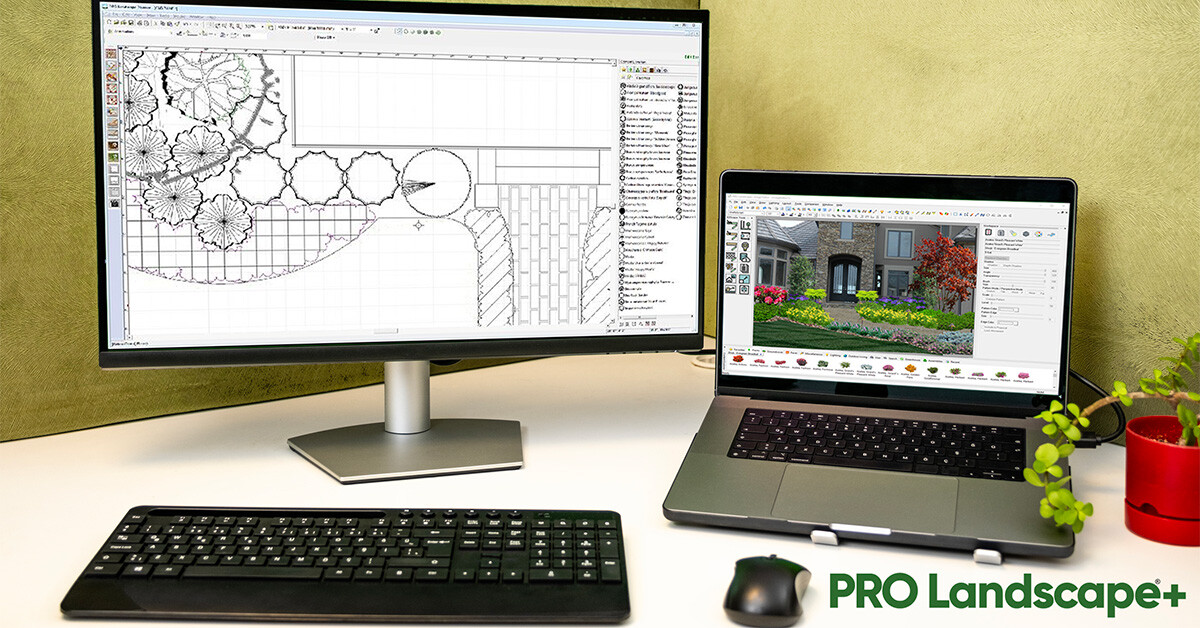Introducing PRO Landscape+: Enhanced Version with More Affordable Pricing Model
(September 16, 2024)—On September 16, 2024, Drafix Software, Inc., a leader in landscape design software for three decades, proudly unveils the...
The number and cost of weather related disasters are on the rise in the United States. This is due to increased exposure, greater intensity and damage caused, along with the rate at which these events are occurring. Reports from the Climate Change Committee attribute much of this increase to climate change. According to the National Centers for Environmental Information, the number of billion-dollar disasters in 2020 came from 22 separate events. The cost of these events exceeded $95 billion in damages. Of these, 13 were related to severe storms. The strain of stormwater events is especially hard on urban areas, where the landscape and the population are dense.
Most cities use municipal separate storm sewer systems. These are networks of ditches, curbs, gutters, sewer pipes and outfalls solely dedicated to moving runoff from everywhere in the city to the natural waterways that eventually carry it away. However, in the event of extreme rainfall, these waterways are not equipped to manage a deluge of water. Additionally, pollutants from the streets are washed into the waterways. Some cities have added concrete to the inside of channels to increase the water flow, but this diminishes the natural beauty of the landscape and does nothing to pull pollutants from the water.
Many municipalities are implementing and even requiring low impact solutions to better mitigate the effects of stormwater and reduce pollutants in our water. Among these is requiring a certain percentage of porous surface in new development and redoing existing impervious surfaces. Many design professionals are opting to use permeable paving on areas that have traditionally been paved with concrete or asphalt in order to achieve these goals.

Permeable paving is a type of pavement or under-surface structure that supports the passage of rainfall or water runoff through the surface of the sub-surface below it.They are designed primarily to support the heavy load of traffic while also protecting the surface from compaction and allowing drainage. Permeable pavers can support a wide range of traffic types, from pedestrian foot traffic and residential parking to emergency vehicles. The depth of the base course beneath the pavers determines the weight the pavers can support. With appropriate base course, permeable pavers can far exceed H-20loading and have a psi of over 15,000. concrete or asphalt, rigid plastic porous pavers and flexible plastic porous pavers.The functionality, flow rate, maintenance and aesthetics vary with the type of porous paver used; the use, weight and frequency of traffic determine what type of paver can be used.

It is important to create surfaces that are pervious for several reasons. Permeable pavers can not only reduce flooding, but the water is absorbed back into the earth, filtering out pollutants and recharging ground water. Urban areas can decrease areas covered in concrete and asphalt and increase natural surfaces and green space.This can reduce both heat and sound. There are also cold weather benefits, as the air trapped in the pavement can store heat and release it to the surface, speeding the melting of snow and ice. Once melted, the snow will dissipate back through the pavers.

Pedestrian paths, parking lots and fire lanes can all be made using porous paving, creating areas around buildings that will drain instead of pool or send runoff to other areas. Certain porous pavers, namely ridged or flexible ones filled with aggregate or topped with grass, can add green space to the design, thus making an otherwise single-purpose area into a multifunctional space. Grass pavers can also reduce CO2 emissions.

While using any permeable paver in lieu of concrete or asphalt is an environmentally better choice, rigid and flexible plastic pavers will have the greatest impact on extreme rain events, making them the best option in urban areas. They also have the greatest void space so will offer the highest flow rate and, because they are used in conjunction with aggregate or grass, they offer the greatest environmental benefits. These pavers can also be used in conjunction with underground water storage systems for maximum impact. Because natural bioremediation occurs when the water runs through sand, these systems can provide the opportunity for water reuse, further increasing the environmental benefits.
As populations continue to grow in urban areas, adding porous surfaces, along with other low-impact solutions, will be increasingly important. Implementing building and design practices that will help to mitigate stormwater events will aid in cities being more resilient. In moving toward greener urban planning, we can better preserve and protect the future of these cities.

Up close of gravel paver
Marianne Davidson
Vice President, Marketing
Email: marianne@invisiblestructures.com
www.invisiblestructures.com


(September 16, 2024)—On September 16, 2024, Drafix Software, Inc., a leader in landscape design software for three decades, proudly unveils the...

Increase your landscape company’s profitability by making better purchasing decisions By Bryan Mours, Vice President of Customer Experience, Aspire...

Angelica Negrete Founder & Owner,Royal Gardens Landscaping and Design Plantation, FL 1. What’s the best part of your job?